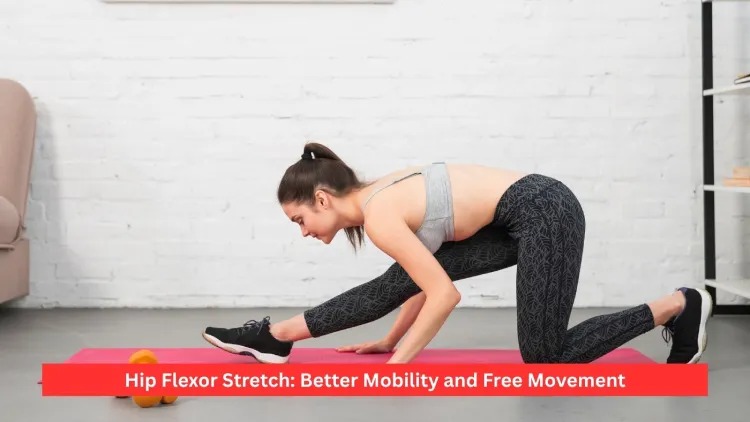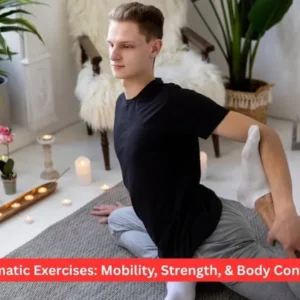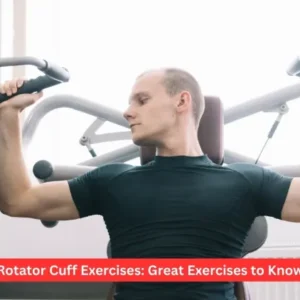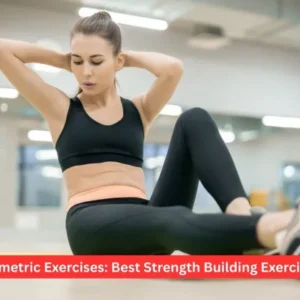Painful and stiff lower back, and poor posture- this is brought about by tight hips. Regular hip flexor stretch works to increase flexibility, improve sports performance, decrease pain, and restore normal movement patterns. The guide is all about hip flexor stretches and everything you need to know about them, such as benefits, techniques, types or variations, and tips to achieve maximum results.
- What Are Hip Flexors?
- Importance of Stretching Hip Flexors
- Advantages of Hip Flexor Stretch
- Performing a Hip Flexor Stretch
- Common Mistakes to Avoid
- At what time should a Hip Flexor Stretch be done?
- Who is supposed to perform Hip Flexor Stretches?
- Stretching Hip Flexor Stretch Tips
- Strengthening Exercises of the Hip Flexor
- Conclusion
- Frequently Asked Questions
What Are Hip Flexors?
It is necessary to learn about the muscles involved before knowing how to do a hip flexor stretch. Hip flexors are a series of muscles that are found in the front part of the hips and are used to join the legs to the pelvis and lower spine. These muscles are very important in walking, running and making the pelvis stable when they are in motion.
These are the major hip flexor muscles:
- Psoas Major: This muscle attaches to your lower spine to your femur, and it is essential in hip bending.
- Iliacus: Action in flexion in the hips along with the psoas.
- Rectus Femoris: This forms part of the quadriceps, which also assists in elevating the thigh.
- Sartorius: This is the longest muscle in the body that helps in the movement of the hips and knees.
- Tensor Fasciae Latae (TFL): Helps to stabilise the pelvis in activity.
These same muscles constrict with inactivity or, over time, as a result of sitting down and limiting the range of movement of the hip, which may be the cause of hip, lower back, and knee pain. It is where a hip flexor stretch routine would be necessary.

Importance of Stretching Hip Flexors
Contemporary lives are characterised by excessive sitting at the office, in cars or on the TV. It is because this hip flexion maintains the hip flexor muscles in a shortened, tight state.
This might, over time, lead to a physical problem chain reaction, which includes:
- Lower back discomfort
- Pelvic rotation (forward or backwards)
- Poor posture
- Stiffness of the hips and lack of freedom of movement.
- Knee or hamstring strain
These problems can be reversed by doing a hip flexor stretch, which will increase the length of tight muscles, lower the tension, and ease the hip. It assists in re-creating a balance between the posterior part and the anterior part of the body and forms a better alignment and circulatory motion.
Advantages of Hip Flexor Stretch
An infrequent but standard hip flexor stretching workout will have many physical advantages beyond that of flexibility.
The key benefits are to be discussed:
1. Increases Flexibility and Mobility
Hip flexor stretches can be used to restructure their usual patterns of movement as they enable the hips to stretch to a full extent. This simplifies tasks that involve walking, running, squatting and lunging.
2. Reduces Lower Back Pain
Strict hip flexors place the pelvis striking an excessive curve in the lower spine. This will lead to chronic back pain. Stretching such muscles will assist in releasing tension and repositioning the pelvis, thus alleviating pain.
3. Enhances Posture
Sedentary habit results in a pushed-forward pelvis and a round shoulder. A daily extensor stretch of the hip brings out the anterior of the hips and makes us more upright in posture, making our motions more confident.
4. Enhances Sporting activity
Hip mobility is very important to athletes because of sprinting, jumping and weightlifting. Elastic hip flexors create more flexibility and offer more power production when it comes to physical activities.
5. Prevents Injuries
Stiff muscles are likely to strain and be injured. Stretching enables the hips to be loose, which lessens the chances of strains, tears and joint misalignments.
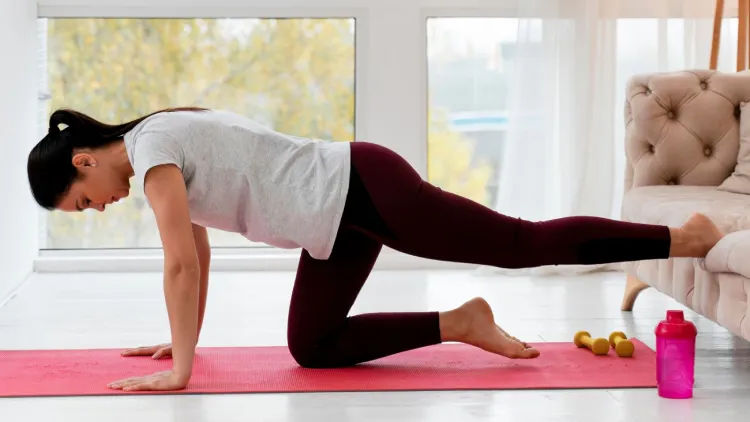
Performing a Hip Flexor Stretch
A hip flexor can be effectively done in several ways. All variations are aimed at the same outcome via different approaches to the muscles; however, they focus on a different aspect of it.
1. Kneeling Hip Flexor Stretch
Steps:
- Start in a kneeling posture with your right knee bent to the floor and the left foot elevated in front of you so as to create a 90-degree angle.
- Maintain the upright posture of your torso by using your core muscles.
- Slide your hips forward, taking care not to overstretch the area in front of your right hip.
- Hold the position 30-60 seconds and change sides.
Tip: Do not make yourself too arched, or push your hips too far. Pay attention to keeping good results.
2. Standing Hip Flexor Stretch
Steps:
- A lunge is a posture where you stand on one foot and have the other foot behind you.
- Play with the front knee bent at a slight angle with the Premier leg facing straight back.
- Stand on your toes til you can get the burn at the front of your hip.
- Wait 20-30 seconds, change legs.
Tip: Lift the arm on the same side as the leg that is stretched and extend oneself upwards.
3. Pigeon Pose (Yoga Hip Flexor Stretch)
Steps:
- Start in a plank position.
- A- Bend your right knee in front of your right wrist. Place your knee behind your right wrist.
- Bend the right leg back behind.
- Maintain a square position of the hips and bend the torso over a front leg.
- Hold between 30 to 60 seconds, after which sides change.
Tip: If you experience strains on your knees or hips, your yoga block or pillow will be useful.
4. Couch Stretch (Advanced Variation)
Steps:
- Kneel, putting one foot flat on a wall, and the other foot on a couch.
- Make sure to maintain an upright position of the torso and to swing the hips forward.
- Hold for 30–45 seconds per side.
Tip: This iteration reaches deep in the hip-flexor and ventral and lateral quadriceps – best suited to experienced riders.
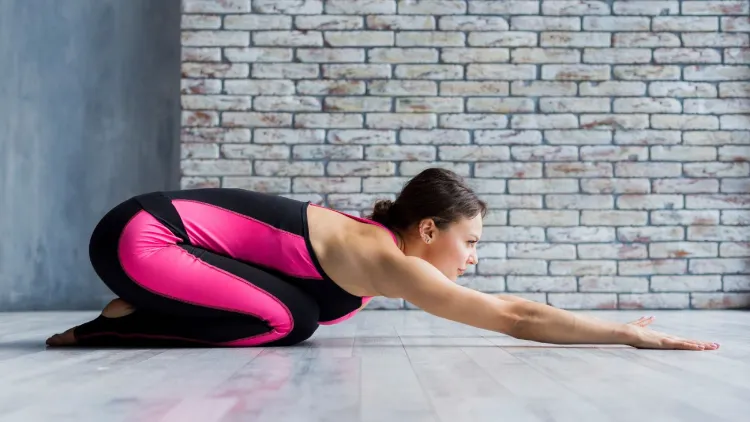
Common Mistakes to Avoid
When doing a hip flexor stretch, it is necessary to avoid the following common errors to make it safe and effective:
- Posteriorly of the back: This decreases the strain on the flexors of the hips and causes stress to the spine.
- Breathing: It is always important to take a deep breath, which relaxes the muscles.
- Bouncing or jerking: Stretch gradually and continuously.
- Disregard of balance: Use your central part of the body to ensure your torso is stable and does not lean forward.
- Omissions of other muscle groups: There should be equal balancing between glute and hamstring extensions with other muscle groups to maintain the whole body.
At what time should a Hip Flexor Stretch be done?
The optimal moment of a hip flexor stretch would be based on your schedule and targets every day. Nevertheless, when it comes to improvements in order to see gains, consistency is essential.
- Pre-exercise: Warm-up of the muscles using dynamic hip flexions before exercise.
- After exercises: Use static stretching exercises to relax and increase flexibility.
- When taking breaks at work: In between, have a brief standing exercise after every hour or two to alleviate sitting stiffness.
- Before bedtime: Light stretching exercises will help relax your muscles and improve your sleep.
- Set 5-10 minutes a day, either as a warm-up or a cooldown workout.
Who is supposed to perform Hip Flexor Stretches?
A hip flexor stretch is beneficial to almost everyone, but in particular, it is necessary:
- Long-term sitting of office employees.
- Sportsmen have repeated leg movements.
- Flexibility is an issue of concern to dancers and gym-goers.
- Elders who are mobile and stable.
- Patients who experience back or hip pain due to the tightness of muscles.
Before starting a stretching program, consult a physical therapist in the event that you have already had a hip operated on and your injuries happened just recently.

Stretching Hip Flexor Stretch Tips
- Warm Up First: Before stretching, one should do some light exercises such as walking or swings of the leg.
- Be Consistent: The long-term flexibility comes with practice daily.
- Breathe the Right Way: Deep breathing improves the flow of oxygen and relaxation.
- Apply Prop: Yoga prop can be used to make the practice comfortable using straps, cushions or walls.
- Strength and Stretch: Work on one hand, balancing the stretching with lunges or bridges, to make the hips stronger.
- Gradual Advancements: Any expansion in the flexibility should be reflected in the increase of the amount of the hold time or depth.
Strengthening Exercises of the Hip Flexor
Stretching enhances the level of flexibility, whereas exercises that strengthen the hip muscles make them balanced and stable.
These moves can be performed with this hip flexor stretch:
- Leg Raises (lying or hanging) – strengthens and makes the legs stable.
- Mountain Climbers — improves coordination and endurance.
- Lunges – Increase mobility and balance.
- Glute Bridges – This exercise works on opposing muscles, so that the muscles do not tighten.
- Plank Knee Drives – Improve the hip and core involvement.
This stretching and strengthening combination guarantees the long-term functional mobility and health of the joints.

Conclusion
The fitness of hip flexor stretch is the full routine that each person needs to develop to achieve improved posture, mobility and comfort. Strange flexors of the hips might hamper you in movements and take the shape of chronic and can be reversed by regular stretching. Whether a sportsman, an office worker, or a person who is fond of running, you may include such stretches in your routine life and your body will feel better and play better.
The keys to having flexible and pain-free hips are consistency, proper form and mindful breathing. Stretching of the hip flexor becomes a normal activity in your exercise routine, and you enjoy the shyness of free movement.
Frequently Asked Questions
1. Can I keep a hip flexor stretch any longer?
Stretch it at each hip and hold the stretch between 30 and 60 seconds on one side, then repeat 2-3 times is the best results.
2. Are tight hip flexors the cause of lower back pain?
Yes, the flexible hips flex the pelvis forward, creating a curve in the lower back, which will more often than not cause pain in the lower back.
3. How frequently are hip flexor stretches done?
To make a permanent difference, it is important to consider doing hip flexor stretch exercises every day or at least four days per week.
4. Is it better to exercise before or after a workout?
Warm up with dynamic stretches before exercise and cool down with the workouts with static stretches to relax muscles and increase flexibility.

